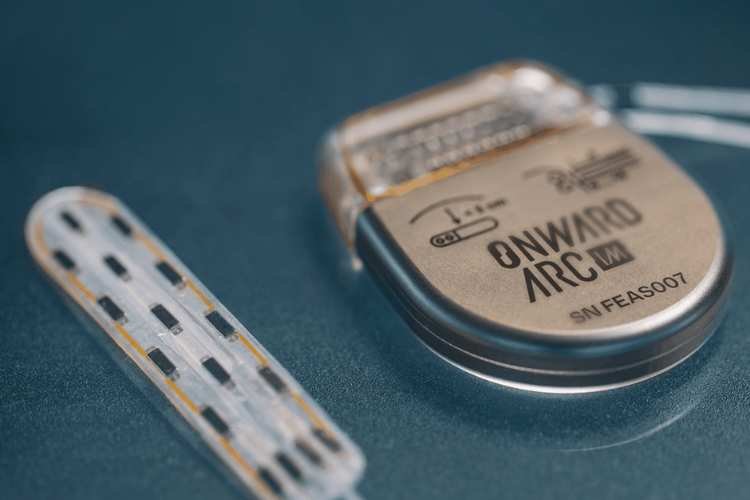Dutch medical device manufacturer Onward Medical has pioneered a groundbreaking approach to restoring arm and hand mobility in individuals who have experienced spinal cord injuries or strokes. Their innovative solution, known as the ARC-IM spinal cord stimulator, combines two cutting-edge technologies: spinal cord stimulation systems and brain-computer interfaces (BCIs). This unique fusion aims to harness the power of thought to control the spinal cord stimulator, potentially offering newfound independence to patients.
Recently, Onward Medical achieved a significant milestone by successfully implanting this integrated system in a human subject. The procedure, conducted in a Swiss hospital, involved two separate stages: the initial implantation of the ARC-IM device followed by the BCI, nine days later. The integration of these two components opens up new possibilities for restoring arm, hand, and finger movement in patients.
The ARC-IM system consists of a lead and a neurostimulator. The lead is strategically placed along the spinal cord, and upon activation by the neurostimulator, it emits mild electrical pulses that stimulate the dorsal roots responsible for transmitting sensory information between the peripheral and central nervous systems.
Concurrently, the BCI captures neurological signals generated when a paralyzed individual desires to move their upper extremities. Advanced artificial intelligence algorithms decipher the intent behind these signals and transmit the information to the ARC-IM device. Here, the nerves are stimulated, facilitating the desired arm, hand, or finger movements.
Also Read: Motif Neurotech Implants Tiny Device To Stimulate Brain And Treat Depression
Notably, earlier this year, researchers from Onward and other institutions demonstrated the success of this combined approach in restoring mobility to a quadriplegic patient. This “digital bridge” connecting the brain and spine not only remained stable for over a year but also contributed to the patient’s neural recovery, enabling him to walk with crutches even when the system was not active.
Onward Medical intends to share further insights into this pioneering project in the coming months, with plans to publish a peer-reviewed study outlining the procedure and its outcomes. This development holds the potential to transform the lives of individuals affected by spinal cord injuries and strokes, offering newfound hope and independence through cutting-edge technology.





























